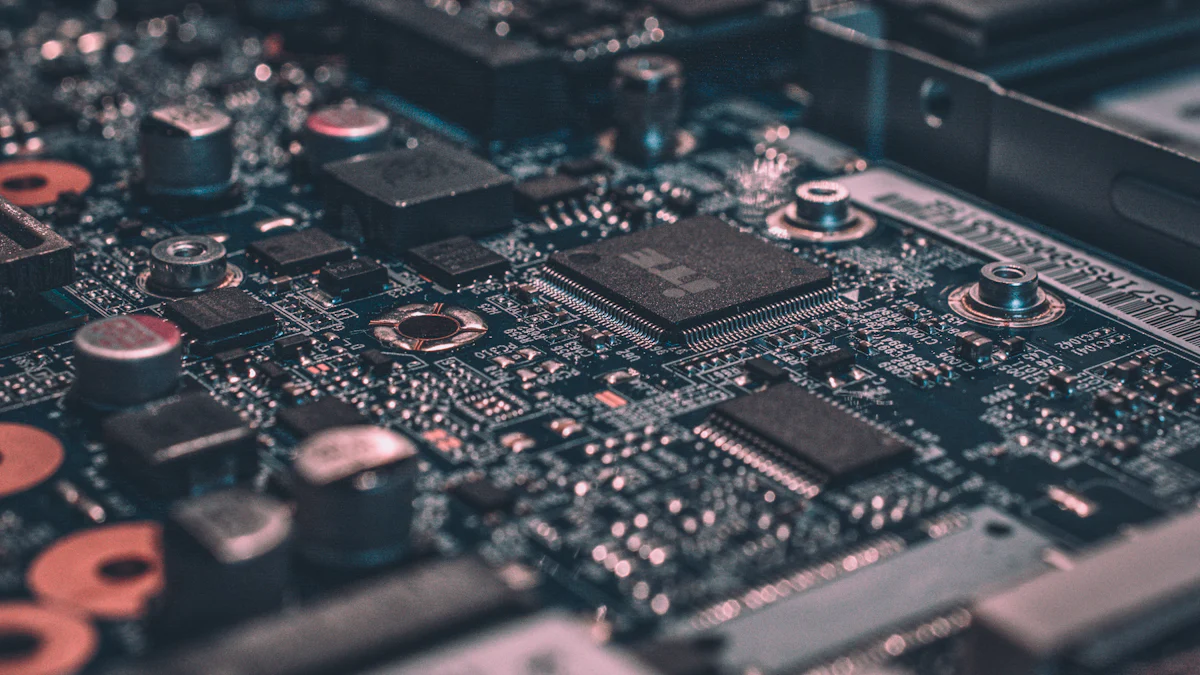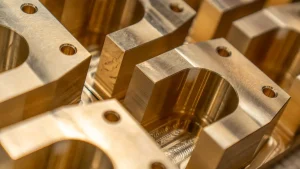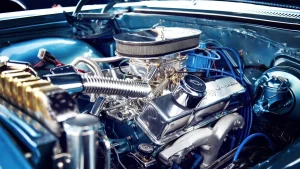
TAC Coating, a nanoscale protective layer made of tantalum carbide, offers exceptional durability. Its hardness, wear resistance, and thermal stability make it a game-changer in material science. By using processes like cvd tac coating, industries enhance product longevity. This innovation enables breakthroughs in technology while reducing maintenance and replacement costs.
Key Takeaways
- TAC Coating is made from tantalum carbide. It is very hard and heat-resistant, perfect for tough conditions.
- TAC Coating helps parts last longer. This lowers repair costs and improves how things work in cars and electronics.
- Its strength helps the environment by cutting waste and saving energy. This supports worldwide eco-friendly goals.
What Is TAC Coating?
Definition and Composition
TAC Coating refers to a nanoscale protective layer composed of tantalum carbide. Tantalum carbide, a compound of tantalum and carbon, is known for its exceptional hardness and thermal stability. This coating forms a thin, durable layer that adheres to the surface of materials. It acts as a shield against wear, corrosion, and extreme temperatures.
The composition of TAC Coating includes tantalum, a rare metal with high melting points, and carbon, which enhances its strength. Together, these elements create a material that resists deformation and maintains its integrity under harsh conditions. Engineers often apply this coating using advanced techniques like chemical vapor deposition (CVD). This process ensures uniform coverage at the nanoscale level, which is critical for achieving optimal performance.
Key Features and Advantages
TAC Coating offers several unique features that make it indispensable in various industries. Its hardness ranks among the highest of known materials, providing superior resistance to scratches and abrasions. This property extends the lifespan of coated components, reducing the need for frequent replacements.
The coating also exhibits remarkable thermal stability. It can withstand extreme temperatures without losing its protective qualities. This makes it ideal for applications in high-heat environments, such as aerospace and automotive industries.
Another advantage is its ability to resist chemical corrosion. TAC Coating protects surfaces from damage caused by exposure to harsh chemicals, ensuring long-term reliability. Additionally, its nanoscale thickness minimizes added weight, making it suitable for precision applications like electronics and medical devices.
By combining these features, TAC Coating enhances the performance and durability of materials, enabling technological advancements across multiple fields.
The Science Behind TAC Coating

Nanoscale Properties and Protective Mechanisms
TAC Coating operates at the nanoscale, where its unique properties emerge. At this level, the coating forms an ultra-thin layer that bonds tightly to the material’s surface. This nanoscale thickness ensures minimal weight addition while providing maximum protection. The atomic structure of tantalum carbide contributes to its exceptional hardness. This structure resists deformation, even under high pressure or extreme conditions.
The protective mechanisms of TAC Coating include its ability to act as a barrier. It prevents physical wear by reducing friction between surfaces. It also shields materials from chemical reactions, such as oxidation or corrosion. These properties make it ideal for environments where materials face constant stress or exposure to harsh elements. For example, in semiconductor manufacturing, the coating protects delicate components from damage during high-temperature processes.
Vapor Deposition Process and Application Techniques
The application of TAC Coating relies on advanced techniques like chemical vapor deposition (CVD). This process involves heating tantalum and carbon precursors in a controlled environment. The materials vaporize and then condense onto the target surface, forming a uniform layer. Engineers carefully control the temperature and pressure to achieve precise results.
CVD ensures that the coating adheres evenly, even on complex shapes or intricate designs. This uniformity is critical for industries like aerospace, where every component must meet strict performance standards. Other methods, such as physical vapor deposition (PVD), may also be used depending on the application. These techniques allow TAC Coating to deliver consistent protection across a wide range of materials.
Technological Innovations Enabled by TAC Coating

Applications in Electronics and Semiconductor Manufacturing
TAC Coating plays a vital role in the electronics and semiconductor industries. Manufacturers use it to protect delicate components during high-temperature processes. Its thermal stability ensures that chips and circuits remain intact under extreme heat. This coating also prevents oxidation, which can degrade electronic performance over time.
In semiconductor manufacturing, TAC Coating enhances the durability of tools used in wafer production. It reduces wear and tear, ensuring precise and consistent results. Engineers rely on its nanoscale thickness to maintain the accuracy required for microchip fabrication. This innovation has contributed to the development of smaller, faster, and more efficient electronic devices.
Enhancing Automotive Components
Automotive engineers use TAC Coating to improve the performance of critical components. Its hardness and wear resistance make it ideal for engine parts, such as pistons and valves. These components endure constant friction and high temperatures, which can lead to failure. TAC Coating minimizes wear, extending the lifespan of these parts.
The coating also enhances fuel efficiency by reducing friction between moving parts. This improvement lowers energy loss, helping vehicles achieve better mileage. Additionally, TAC Coating protects exhaust systems from corrosion caused by exposure to harsh chemicals and extreme heat.
Advancements in Healthcare and Medical Devices
In healthcare, TAC Coating has revolutionized the design of medical devices. Its biocompatibility ensures that it can safely interact with human tissues. Surgeons use coated instruments for procedures requiring precision and durability. The coating resists wear, maintaining the sharpness and reliability of surgical tools.
Medical implants, such as joint replacements, benefit from TAC Coating as well. It reduces friction between surfaces, improving patient comfort and implant longevity. This innovation has enhanced the quality of life for many individuals by providing reliable and long-lasting medical solutions.
Benefits of TAC Coating
Durability and Resistance to Wear
TAC Coating significantly enhances the durability of materials. Its exceptional hardness protects surfaces from scratches, abrasions, and mechanical stress. This feature makes it ideal for components exposed to constant friction or heavy loads. For instance, in industrial machinery, TAC Coating reduces wear on moving parts, ensuring consistent performance over time. By minimizing surface damage, it extends the lifespan of materials and reduces the need for frequent replacements.
The coating also resists deformation under extreme conditions. It maintains its structural integrity even when subjected to high pressure or temperature fluctuations. This reliability makes it a preferred choice for industries like aerospace and automotive, where components must endure harsh environments.
Cost-Effectiveness and Economic Impact
The long-term cost benefits of TAC Coating are substantial. By extending the lifespan of materials, it reduces maintenance and replacement expenses. Industries save money by avoiding frequent repairs and downtime. For example, manufacturers using TAC Coating on tools and equipment experience fewer breakdowns, leading to increased productivity.
Additionally, the coating’s ability to enhance fuel efficiency in vehicles contributes to economic savings. Reduced friction between engine parts lowers energy consumption, which translates to lower fuel costs. These advantages make TAC Coating a cost-effective solution for businesses aiming to optimize their operations.
Environmental Sustainability and Reduced Waste
TAC Coating supports environmental sustainability by reducing material waste. Its durability ensures that components last longer, decreasing the frequency of replacements. This reduction in waste helps conserve natural resources and minimizes the environmental impact of manufacturing processes.
The coating also contributes to energy efficiency. In automotive applications, it reduces friction, leading to lower fuel consumption and fewer greenhouse gas emissions. Furthermore, its resistance to chemical corrosion prevents the release of harmful substances into the environment. These eco-friendly benefits align with global efforts to promote sustainable practices across industries.
Challenges and Limitations of TAC Coating
High Production Costs and Scalability Issues
Producing TAC Coating involves advanced techniques like chemical vapor deposition (CVD). These methods require specialized equipment and precise environmental controls. The high cost of tantalum, a rare metal, further increases production expenses. Industries often face challenges when scaling up these processes for mass production. Small-scale applications may justify the cost, but large-scale manufacturing struggles to balance affordability with quality.
Tip: Research into alternative materials or more efficient deposition techniques could help reduce costs and improve scalability.
Material Compatibility and Industry-Specific Challenges
TAC Coating does not suit all materials. Its application depends on the substrate’s ability to bond with the coating. Some materials may experience adhesion issues, leading to reduced effectiveness. Industries like aerospace and healthcare demand strict performance standards. Engineers must carefully evaluate whether TAC Coating meets these requirements for specific applications.
In some cases, the coating’s hardness can create challenges. For example, it may cause brittleness in certain materials, limiting its use in flexible or lightweight designs. These compatibility issues require tailored solutions for each industry.
Addressing Environmental and Regulatory Concerns
The production of TAC Coating raises environmental concerns. The processes involved consume significant energy and may release harmful byproducts. Regulatory bodies impose strict guidelines to minimize environmental impact. Companies must invest in cleaner technologies to comply with these regulations.
Note: Recycling tantalum and improving energy efficiency during production can help address these concerns. Sustainable practices will play a key role in the future of TAC Coating.
TAC Coating represents a breakthrough in nanoscale protection and material science. Its ability to enhance durability and performance positions it as a transformative technology. Industries can benefit from its innovative applications. Continued research will unlock new possibilities, ensuring TAC Coating remains a cornerstone of technological progress. Adopting this technology will drive future advancements.





